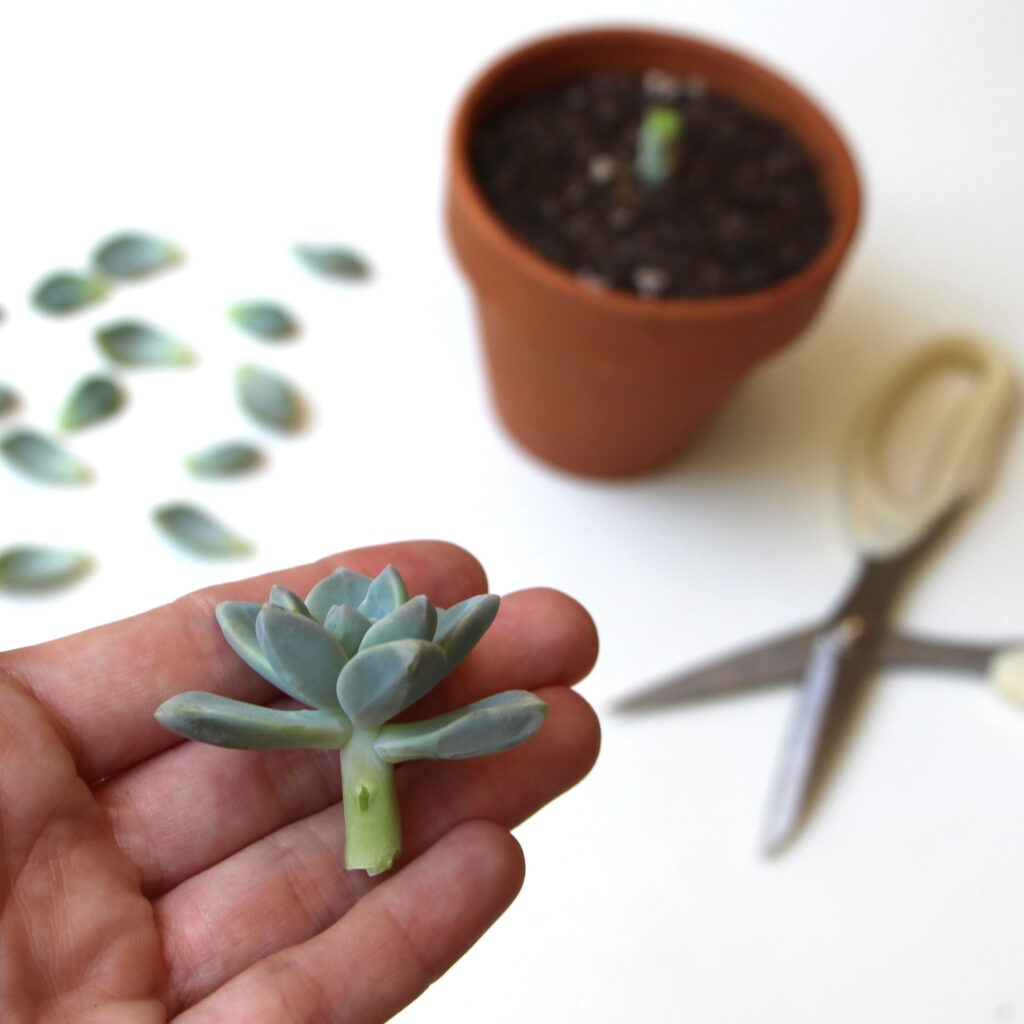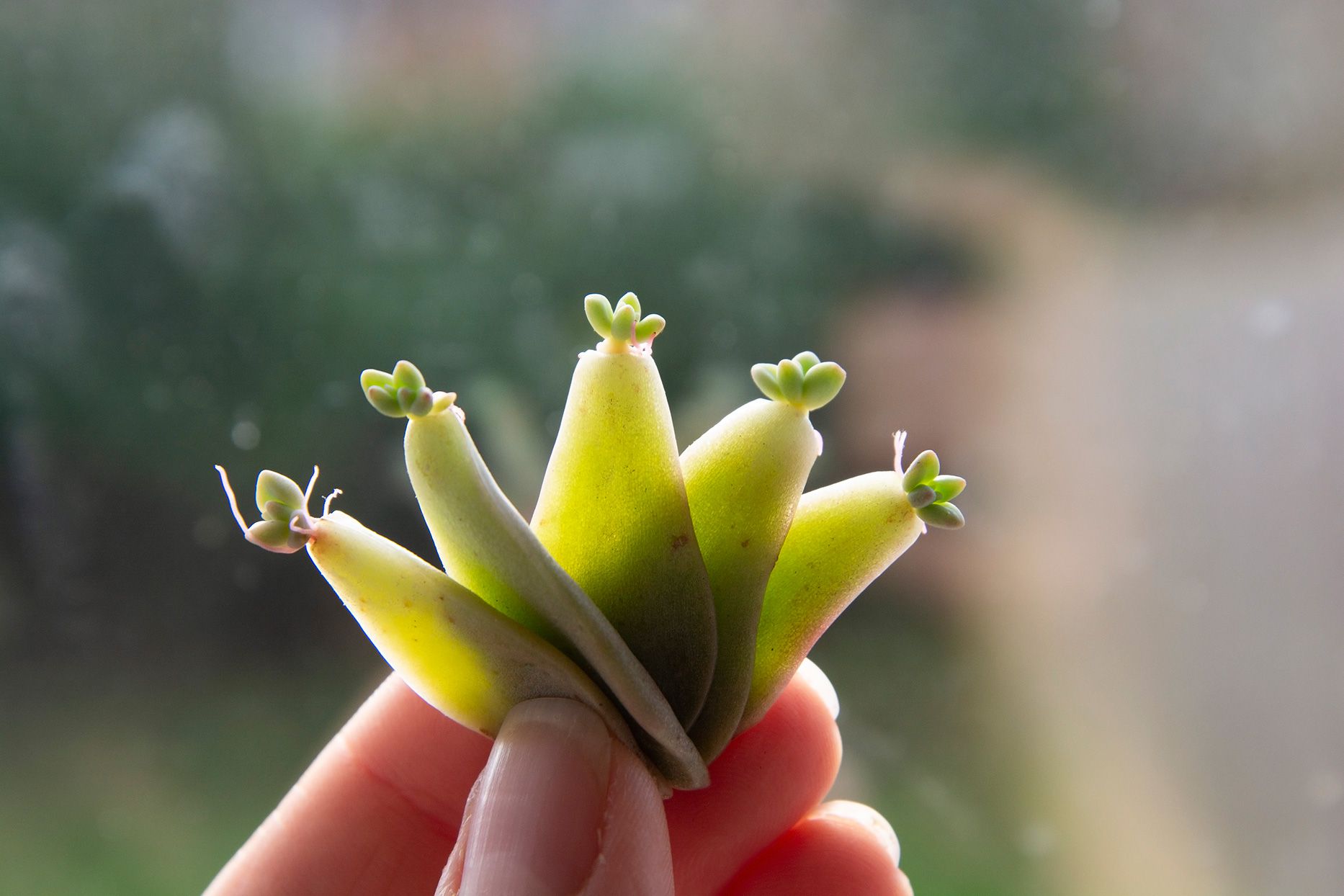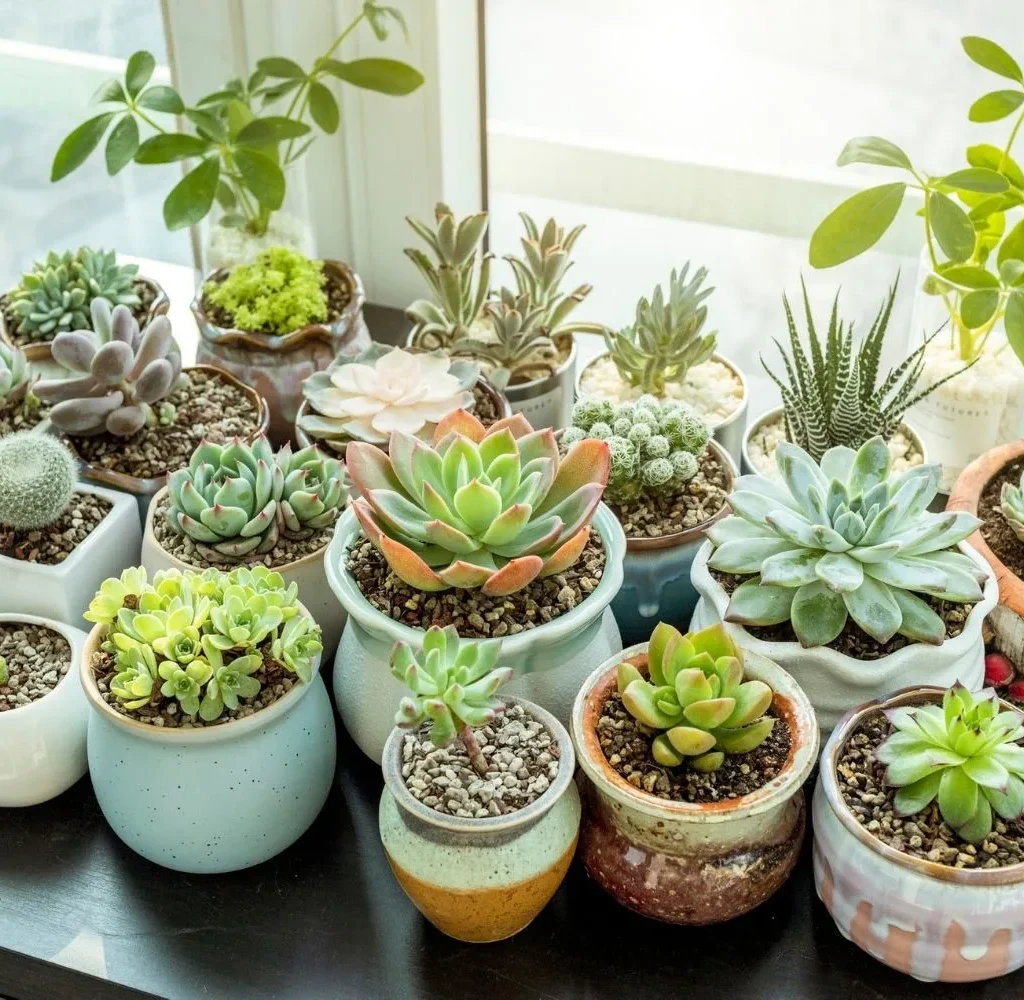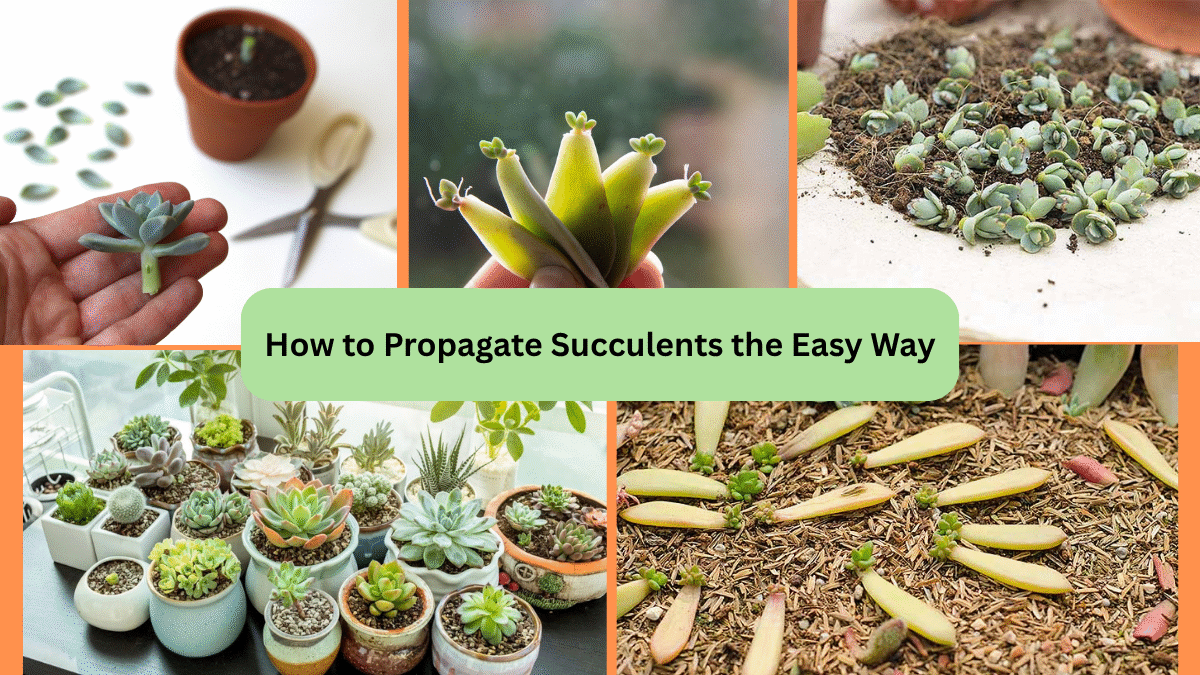Succulents are among the most popular houseplants, loved for their unique shapes, stunning colors, and easy care. But did you know you can grow new succulents from the ones you already own — right at home? Succulent propagation is simple, satisfying, and a budget-friendly way to expand your plant collection.
In this comprehensive guide, you’ll discover how to propagate succulents the easy way, using different techniques suitable for beginners and experienced plant lovers alike. Let’s dive in!
What Is Succulent Propagation?

Succulent propagation is the process of creating new plants from existing ones using parts like leaves, cuttings, offsets (baby plants), or seeds. Thanks to their hardy, drought-tolerant nature, succulents are incredibly easy to multiply — and it’s a great way to turn one plant into many.
Benefits of Propagating Succulents
✔ Cost-effective — no need to buy new plants
✔ Easy to learn and perfect for beginners
✔ Helps rejuvenate leggy or overgrown succulents
✔ A fun indoor gardening project for families
✔ Makes thoughtful, homemade plant gifts
✔ Expands your home garden effortlessly
Best Time to Propagate Succulents
Succulents can be propagated year-round indoors, but for the best results:
- Spring and early summer are ideal, when plants are actively growing.
- Avoid heavy propagation in winter dormancy.
Pro tip: Always use healthy, mature succulents for propagation.
Materials You’ll Need

- Healthy succulent plant
- Sharp, clean scissors or pruning shears
- Small containers or shallow trays
- Well-draining succulent or cactus soil
- Spray bottle (for light misting)
- Optional: Rooting hormone (not necessary, but helpful)
4 Easy Ways to Propagate Succulents
Leaf Propagation
The most popular method — perfect for rosette-shaped succulents like Echeveria, Graptopetalum, or Sedum.
How to do it:
- Choose a plump, healthy leaf from your succulent.
- Gently twist or wiggle it off the stem, ensuring a clean break.
- Allow the leaf to callus over for 1–2 days in a dry, shaded area. This prevents rot.
- Place the callused end on top of well-draining soil — do not bury.
- Mist lightly every few days to keep the soil slightly damp.
- In 2–3 weeks, tiny roots and new baby plants will appear at the base.
When to transplant: Once the baby plant has developed a few leaves and the original leaf shrivels.
Ideal for: Echeveria, Sedum, Graptopetalum, Crassula
Stem Cutting Propagation

Great for succulents that grow tall or leggy like Jade Plant, Aeonium, or Kalanchoe.
How to do it:
- Use clean scissors to snip a healthy stem about 3–4 inches long.
- Remove lower leaves from the stem, leaving a few at the top.
- Let the cutting callus for 2–5 days in a dry, shaded spot.
- Plant the callused end into well-draining soil.
- Mist lightly every few days or water once the soil dries out.
Roots typically develop in 1–3 weeks, followed by new growth.
When to transplant: When the cutting shows resistance to a gentle tug and new leaves appear.
Ideal for: Jade Plant, Kalanchoe, Echeveria, Aeonium
Offset (Pup) Propagation
Many succulents naturally produce offsets — baby plants growing at their base.
How to do it:
- Gently remove the offset by cutting or pulling it away from the mother plant.
- Let the offset callus for 1–2 days.
- Plant it in a small pot with succulent soil.
- Water sparingly until roots establish, then follow normal succulent care.
Offsets establish faster than leaf cuttings and are genetically identical to the parent.
Ideal for: Aloe Vera, Haworthia, Sempervivum (Hens and Chicks)
Water Propagation (Optional Method)
Though succulents dislike sitting in water, some gardeners successfully root cuttings this way.
How to do it:
- Place a leaf or stem cutting with the base hovering just above the water in a glass jar.
- Use plastic wrap or toothpicks to hold it in place.
- Keep in bright, indirect light.
- Change the water every few days.
- Once roots form, transplant into soil.
Note: Best for experimenting with certain varieties like Jade Plant or Crassula.
Tips for Successful Succulent Propagation

✔ Always use healthy, disease-free leaves or cuttings.
✔ Ensure cuttings callus over to prevent rot.
✔ Use a gritty, well-draining soil mix specifically for succulents.
✔ Avoid overwatering — let the soil dry between mists or waterings.
✔ Provide bright, indirect light — avoid harsh midday sun.
✔ Be patient — some varieties root faster than others.
Common Mistakes to Avoid
Using damp or soggy soil — leads to rot.
Forgetting to let cuttings callus — increases chances of fungal infection.
Over-misting or overwatering — remember succulents like it dry.
Keeping in low light — propagation requires adequate indirect sunlight.
Using unhealthy or damaged leaves — they won’t propagate successfully.
Best Succulents for Easy Propagation
Some succulents propagate more reliably and quickly than others:
✔ Echeveria
✔ Sedum
✔ Jade Plant (Crassula ovata)
✔ Aloe Vera
✔ Haworthia
✔ Kalanchoe
✔ Sempervivum (Hens and Chicks)
✔ Graptopetalum
How Long Does Propagation Take?

- Roots typically appear within 1–3 weeks.
- New baby plants or leaves may take 4–8 weeks depending on conditions and variety.
- Full transplants are usually ready within 2–3 months.
Be patient — succulents grow slowly, but the results are worth it.
Fun Propagation Projects
Create a succulent propagation station using shallow trays or decorative jars.
Design a DIY living wall frame using propagated succulents.
Use excess plantlets to make eco-friendly gifts for friends and family.
Share cuttings in community plant swaps or on social media gardening groups.
Final Thoughts
Learning how to propagate succulents the easy way is a rewarding, affordable, and sustainable way to grow your plant collection. With simple tools, a bit of patience, and the right care, you can turn one succulent into many, decorate your home, and even share your green thumb with others.
So gather those leaves, snip those stems, and start your own succulent propagation adventure today!






Leave A Comment